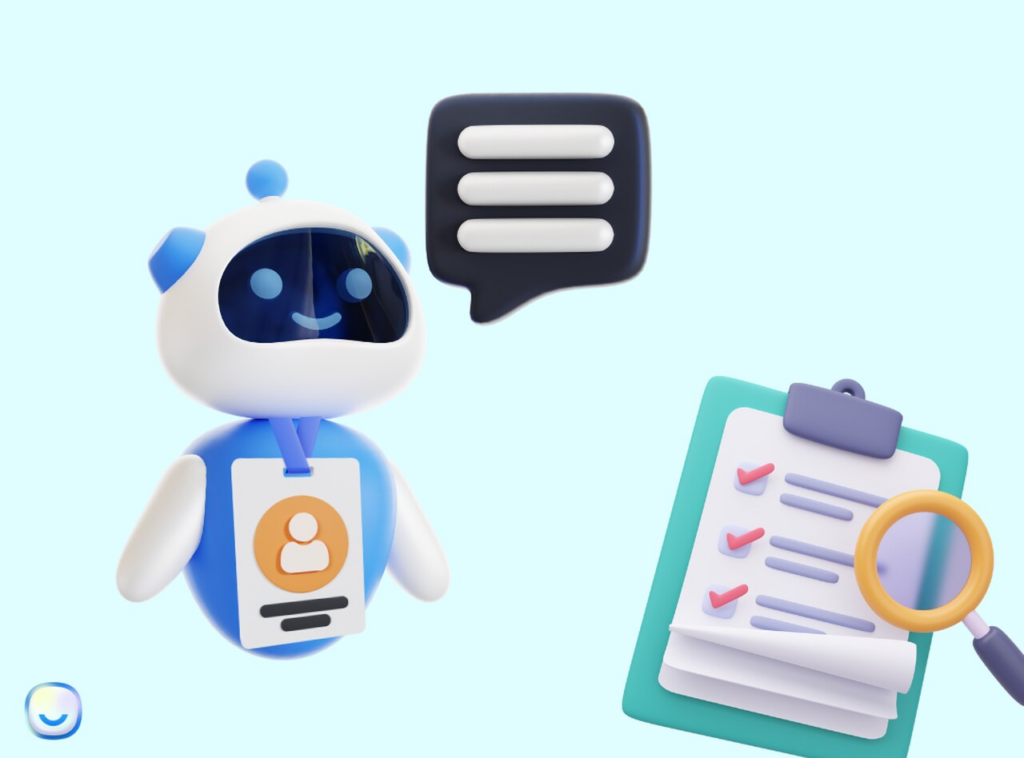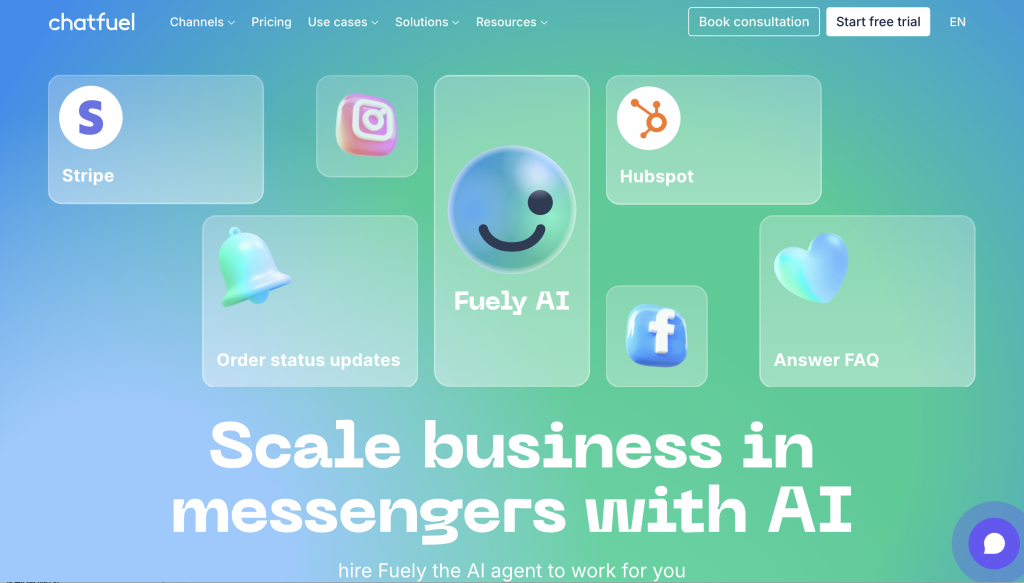
In the B2B SaaS industry, AI chatbots have become an essential tool for enhancing customer experience and streamlining business operations. Here’s a closer look at some of the top tools and their applications:
I. Popular AI Chatbot Tools for B2B SaaS
1. Chatfuel: It is a widely used chatbot platform that simplifies the process of creating bots.
- Easy to Use: With its intuitive interface, even those without technical expertise can build chatbots easily. It offers a drag-and-drop builder and pre-built templates.
- Multi-platform Compatibility: Chatbots created on Chatfuel can be integrated with various platforms like Facebook Messenger, Instagram, and websites, allowing businesses to reach their customers wherever they are.
- Automation and Analytics: It enables businesses to automate responses to frequently asked questions, saving time and resources. The analytics dashboard provides valuable insights into chatbot performance and customer behavior.

2. Dialogflow: A powerful tool that uses advanced natural language processing and machine learning algorithms.
- Intelligent Understanding: It can understand complex user intents and contexts, providing more accurate and relevant responses. This is especially useful for handling detailed inquiries in the B2B SaaS context.
- Multilingual Support: It supports multiple languages, making it ideal for businesses with a global customer base. You can create chatbots that communicate effectively with customers in different regions.
- Integration with Other Services: Dialogflow can be integrated with various Google Cloud services and other third-party applications, enhancing its functionality and enabling seamless data flow between different systems.
3. Tidio: A user-friendly chatbot and live chat software that offers a comprehensive set of features.
- Real-time Chat: In addition to chatbot capabilities, it provides real-time chat support, allowing agents to take over the conversation when needed. This hybrid approach ensures a smooth customer experience.
- Visitor Tracking: It tracks visitor behavior on the website, providing valuable information about their interests and actions. This data can be used to trigger personalized chatbot messages and offers.
- Automated Workflows: You can create automated workflows and sequences to guide the customer through the sales or support process, increasing conversion rates and customer satisfaction.
II. Applications of AI Chatbots in B2B SaaS
1. Customer Support
- 24/7 Availability: AI chatbots can provide round-the-clock support, answering customer questions and resolving issues even outside of business hours. This ensures that customers always have access to assistance, improving their satisfaction.
- Quick Response: They can respond to customer inquiries instantly, reducing wait times and improving the overall customer experience. For example, a chatbot can quickly provide answers to common questions about software features or account management.
- Escalation to Human Agents: When a chatbot encounters a complex issue that it cannot handle, it can escalate the conversation to a human agent, ensuring that the customer receives the necessary expertise.
2. Lead Generation and Qualification
- Data Collection: Chatbots can engage website visitors and collect valuable information such as contact details, company size, and pain points. This data can be used to qualify leads and identify potential customers for the B2B SaaS business.
- Initial Engagement: They can initiate conversations with visitors, introduce the SaaS product or service, and answer their initial questions. By providing a personalized and interactive experience, chatbots can increase the likelihood of converting visitors into leads.
- Appointment Scheduling: Chatbots can also schedule appointments with sales representatives, making it easier for potential customers to connect with the right person at the right time.
3. Account Management and Onboarding
- Guided Onboarding: Chatbots can guide new customers through the onboarding process, helping them set up their accounts, understand the software features, and get started quickly. This reduces the time and effort required for manual onboarding and improves the user experience.
- Account Updates and Support: They can assist customers with updating their account information, managing subscriptions, and handling billing inquiries. By providing instant support for these routine tasks, chatbots free up human agents to focus on more complex issues.
- Upselling and Cross-selling: Based on the customer’s usage patterns and account history, chatbots can suggest additional features or upgrades, increasing the average revenue per customer.

In conclusion, AI chatbots offer numerous benefits and applications for B2B SaaS businesses. By choosing the right chatbot tool and implementing it effectively, businesses can improve customer satisfaction, increase efficiency, and drive growth.




